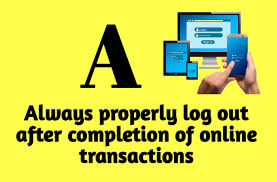From Data to Deals: How Verified Contact Databases Empower Modern Sales Teams
In the fast-moving world of B2B sales, success often comes down to one overlooked factor — data quality.
Sales teams rely on contact information to reach decision-makers, but too often that data is outdated, incomplete, or inaccurate. A phone number that no longer works, an email that bounces, or a lead that’s already moved companies can cost hours of productivity and drain morale across your sales floor.
What’s the consequence of this? Your reps spend more time chasing ghosts than closing deals. CRM systems get cluttered with bad data, outreach campaigns underperform, and marketing alignment suffers.
It’s a silent killer of pipeline performance, one that can’t be fixed by more emails or calls, but by better information.
That’s where verified contact databases come in. By ensuring every lead in your system is accurate, compliant, and up-to-date, these databases help teams focus their energy on conversations that matter.
Why Verified Contact Data Is the Real Game-Changer
Not all data is created equal. In B2B sales, accuracy can make the difference between a deal won and a deal lost.
A verified contact database goes beyond a basic spreadsheet of names and numbers. It’s a living ecosystem of up-to-date, validated information gathered through multiple verification layers.
Modern data providers use a blend of AI-driven enrichment, human validation, and compliance screening to ensure each record meets the highest standard. This means every phone number, job title, and company domain has been cross-checked against real-time signals, from company websites and email activity to social profiles and third-party integrations.
Why does this matter for sales teams? Because verified data translates directly into better outcomes:
- Higher connect rates: Reps reach the right person faster without wasting dials on invalid contacts.
- Improved personalization: With accurate job roles and firmographic data, outreach can be tailored to real needs, not assumptions.
- Regulatory safety: Verified data reduces the risk of violating privacy laws like GDPR and CCPA.
How Contact Databases Fuel the Sales Process
Every sales pipeline starts with one essential ingredient: the right contact. But the value of a verified contact database extends far beyond just filling the top of the funnel. It enhances every stage of the sales process, from prospecting to closing, by making sure every interaction is targeted, relevant, and timely.
In today’s competitive sales landscape, having accurate, verified contact data helps you to fuel smarter prospecting, more meaningful outreach, and better forecasting, transforming how modern sales teams operate.
1. Prospecting with precision
Instead of spending hours scouring LinkedIn or outdated spreadsheets, sales reps can tap into verified contact databases to identify decision-makers within their ideal customer profile. This saves time and ensures outreach is directed at the right people, those with real buying authority.
2. Smarter, more personalized outreach
With enriched data, such as company size, industry, revenue, and tech stack, sales teams can craft hyper-relevant messages that resonate. Personalized outreach feels more authentic and drives stronger engagement.
Tools like ZoomInfo’s sales lead database empower teams to instantly access verified, up-to-date information on key prospects, helping them craft outreach that feels personal, not spammy.
3. Data-driven follow-ups and nurturing
When your database syncs with your CRM, every activity, from calls to follow-ups, is tracked automatically. Reps can trigger nurturing workflows based on engagement signals or buying intent, ensuring prospects move smoothly down the funnel.
4. Closing with confidence
Accurate data doesn’t just get you in the door, it helps you close. When sales teams understand who they’re speaking to, what challenges those buyers face, and how their company fits into the solution, conversations become more strategic. Verified data turns blind pitches into informed discussions that build trust and shorten sales cycles.
The ROI of Clean Data: Quantifying the Impact
For many organizations, the idea of “clean data” sounds nice in theory, but its real power shows up in the numbers.
When every record in your CRM is accurate and up to date, the effects ripple across your entire revenue operation, improving performance metrics that directly impact your bottom line. When your contact records are precise, your forecasts become sharper, your campaigns more effective, and your customer relationships stronger.
1. Higher deliverability and engagement
Email campaigns built on verified contact data consistently outperform those using generic lists. Clean data reduces bounce rates and spam complaints, helping your domain maintain a healthy sender reputation and ensuring messages actually reach inboxes.
2. Shorter sales cycles
When your reps connect with real decision-makers from the start, deals move faster. No more wasted weeks chasing bad leads or requalifying contacts. Verified databases keep your pipeline filled with prospects who are ready and relevant.
3. Improved SDR productivity
Imagine your sales development reps making 20% fewer calls but booking 40% more meetings, that’s the power of accuracy. Fewer dead ends mean more conversations that count, translating into better morale and higher output per rep.
4. Cost savings through efficiency
According to industry studies, poor-quality data can cost businesses up to 12% of total revenue annually through lost productivity, wasted ad spend, and missed opportunities. By maintaining data integrity, companies reclaim both time and resources.
Integrating Your Contact Database with CRM and Sales Tools
A verified contact database delivers its true value only when it connects seamlessly with your tech stack. In isolation, even the most accurate data can sit idle. But when it integrates directly with your CRM and sales tools, it becomes the heartbeat of an efficient, data-driven operation.
When everything speaks the same data language, your sales motion becomes faster, smarter, and more consistent. The right integration strategy turns a verified contact database into a living system. One that grows, adapts, and delivers measurable impact across marketing, sales, and operations.
1. Syncing data for consistency
Integrating your database with platforms like Salesforce, HubSpot, or Pipedrive ensures that every update flows automatically between systems. This means reps always work with the latest contact info, no manual uploads, no version conflicts, and no duplicate records clogging your CRM.
2. Powering automated outreach and workflows
When clean data connects with tools like Outreach, Apollo, or Salesloft, reps can trigger personalized sequences instantly. Verified job titles and company insights feed dynamic email templates, letting teams scale outreach without losing relevance.
3. Enabling real-time enrichment
Many modern CRMs now support real-time enrichment, automatically refreshing contact and company data when changes occur. This prevents the gradual decay that typically plagues static databases, keeping your pipeline fresh and actionable year-round.
4. Maintaining data hygiene at scale
Integration isn’t a one-time setup; it’s a continuous process. Regular sync schedules, enrichment checks, and field-mapping audits help keep your data ecosystem healthy. Assigning ownership, such as a RevOps manager or data steward, ensures accountability for long-term quality.
Turning Data into Deals
In B2B sales, data is more than just a list of names. It’s the engine that powers every conversation, connection, and conversion.
When your contact database is accurate, verified, and seamlessly integrated across your systems, your sales team operates with clarity and confidence. Every email lands in the right inbox. Every call reaches the right person. Every follow-up feels personal and well-timed.
By investing in verified contact data, you’re not only cleaning your CRM, you’re building a foundation for sustainable growth. Reliable information accelerates prospecting, improves team efficiency, and strengthens the customer experience from the first touchpoint to the final handshake.
The more you trust your data, the more your prospects will trust your message, and that’s what turns outreach into opportunity.




